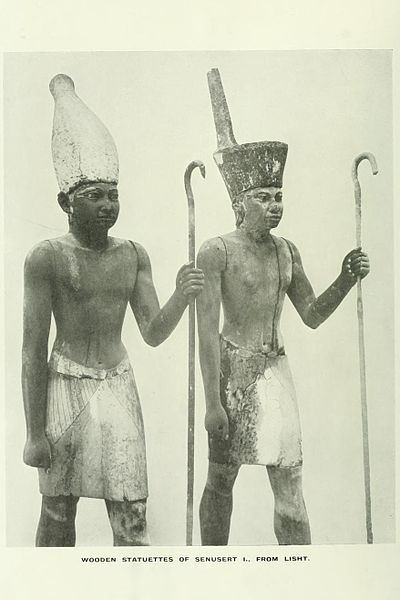Deshret was the Red Crown of Lower Egypt. When combined with the Hedjet of Upper Egypt, it forms the Pschent, in ancient Egyptian called the sekhemti.
Rosetta Stone usage of Red Crown, not as preposition: part of Pschent (Double Crown), and part of "Taui", the name for Upper and Lower Egypt (used combined with a Crossroads (hieroglyph))
Narmer Palette, front
Bronze statuette of a Kushite king wearing the red crown of Lower Egypt; 25th Dynasty, c. 670 BCE, Neues Museum, Berlin
Sandstone statue of Mentuhotep II; 11th Dynasty, c. 2060–2009 BCE, Egyptian Museum, Cairo
Hedjet is the White Crown of pharaonic Upper Egypt. After the unification of Upper and Lower Egypt, it was combined with the Deshret, the Red Crown of Lower Egypt, to form the Pschent, the double crown of Egypt. The symbol sometimes used for the White Crown was the vulture goddess Nekhbet shown next to the head of the cobra goddess Wadjet, the uraeus on the Pschent.
Small bronze statuary usage with the hedjet, white crown
Bronze statuette of a Kushite king wearing the white crown of Upper Egypt; 25th Dynasty, 670 BCE, Neues Museum, Berlin
Painted relief of Mentuhotep II from his mortuary temple at Deir el-Bahri; 11th Dynasty, c. 2060–2009 BCE
A couple of statuettes which represent a Middle Kingdom pharaoh as King of Upper Egypt (left, with the white crown) and King of Lower Egypt (right, with the red crown); wood, from el-Lisht, 12th dynasty, Middle Kingdom (Egyptian Museum, main floor, room 22, JE44951)








